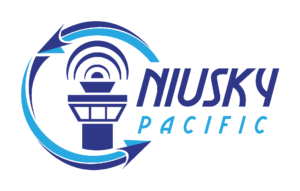NiuSky Pacific begins operational usage of Aireon data
NiuSky Pacific Limited (NSPL), formerly PNG Air Services Limited (PNGASL), the sole provider of Air Navigation Services for Papua New Guinea, has announced today that it has deployed Aireon’s global, real-time, space-based Automatic Dependent Surveillance-Broadcast (ADS-B) for air traffic surveillance services. NSPL had previously relied on ground-based infrastructure for its surveillance capabilities. However, because of Papua New Guinea’s extremely mountainous and difficult terrains, unpredictable and inclement weather and fairly large oceanic airspace, it was a challenge to provide efficient surveillance services for the region using ground-based technology.
NSPL is now operational with Aireon’s space-based ADS-B air traffic surveillance data over the entirety of the Port Moresby Flight Information Region (FIR). Port Moresby shares common borders with Brisbane FIR, managed by Airservices Australia, the Oakland Oceanic FIR, managed by the Federal Aviation Administration (FAA) and Ujung Pandang FIR, managed by AirNav Indonesia.
Additionally, over the next six months NSPL will be phasing out the use of dedicated telecommunications lines to receive ADS-B messages in favor of the International Civil Aviation Organization’s (ICAO) Asia Pacific Common Regional Virtual Private Network (CRV Network). The CRV Network is a cross-border, cost-effective, dedicated communication network for use by ICAO Member States, and provided by a common network service provider, PCCW Global Limited. NSPL, in collaboration with Aireon, is the first Air Navigation Service Provider (ANSP) to transmit and receive air traffic surveillance data through this network.
“NSPL deployed the Aireon space-based ADS-B data to solve our geographic, weather and infrastructure constraints,” said Captain Ted Pakii, CEO and Managing Director, NSPL. “By having complete, real-time air traffic surveillance into our airspace, we are doing an overhaul of our safety and operational policies and procedures. This data has been welcomed by our air traffic controllers, with minimal integration requirements. Space-based ADS-B has really allowed us to usher in next generation technology in our remote region. Within the next few months, we are also migrating away from the local telecommunications lines to ICAO’s CRV Network. We will have an incredible amount of reliability and data speed, solving our previous challenges.”
CRV allows ANSPs to communicate without unique point-to-point leased telecommunications lines for the exchange of flight plan information, voice transmissions, and now, space-based air traffic surveillance services. There are other ICAO-sponsored communications networks, similar to CRV, including the Pan-European Network Service (PENS) in Europe, the FAA’s Telecommunication Infrastructure (FTI) in the U.S. and Canada, Rede Digital da Região SAM (REDDIG) in South America and Mejoras al Enlace de Voz del ATS (MEVA) in the Caribbean.
“NSPL has established best practices for the deployment of space-based ADS-B in remote areas. Through their forward-looking, safety-minded values, NSPL is bringing state-of-the-art air traffic surveillance to all of the Papua New Guinea designated airspace,” said Don Thoma, CEO, Aireon. “The use of the ICAO CRV Network will pave the way for other ANSPs to use this regional, high-fidelity network to access space-based ADS-B surveillance by minimizing dependence on point-to-point circuits. This deployment has been one of the most innovative and collaborative, allowing for the proliferation of our data throughout the region, regardless of connectivity and geography.”
